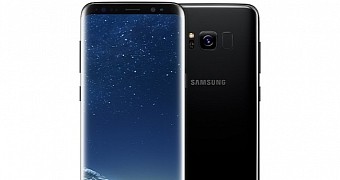Samsung is betting big on its Galaxy S8 premium smartphone, especially since this is the first flagship to be announced after last year’s Galaxy Note 7 disaster. To highlight the battery tests conducted on the latest flagship, a Samsung official answered some questions regarding the quality assurance process.
Following the extensive investigation into Galaxy Note 7 incidents, Samsung concluded that two battery issues had caused the smartphones to catch fire and put in place an 8-point battery safety check, to make sure that such an incident doesn’t happen again.
Samsung’s Sangkyu Lee, Senior Vice President of the Reliability Group, Mobile Communications Business, stated that the Galaxy S8 received third-party certification and Samsung focused on maintaining the durability of the battery on the long term.
Moreover, Samsung sees the battery as one of the most important components of a smartphone and adopted preventive measures to identify and even address potential safety vulnerabilities. Space was assigned around the battery in order to accommodate a new design to protect the battery against physical force, in case the smartphone is dropped.
The battery’s design was also adjusted so that the pressure on the electrode would be eliminated and leakage of battery substrate would be prevented. Battery temperature, charging current and duration are limited via software protection algorithms.
Samsung is trying to downplay the red discoloration issue
The official goes on to highlight safety checks that were conducted during the component assembly, production process and even before the device was prepared for shipment. However, the official didn’t mention anything about the reddish tint on some Galaxy S8 units sold in Korea.
Samsung recently downplayed the issue claiming that it could be fixed by adjusting the color optimization setting for the display, although some users previously stated that this move didn’t solve the problem. Some analysts say that the issue could be caused by faulty chips in the device, while others claim that it might be due to the AMOLED display.
Whatever the case, Samsung needs to properly address the issue and assist users who still experience the problem, even after adjusting display settings.

 14 DAY TRIAL //
14 DAY TRIAL //